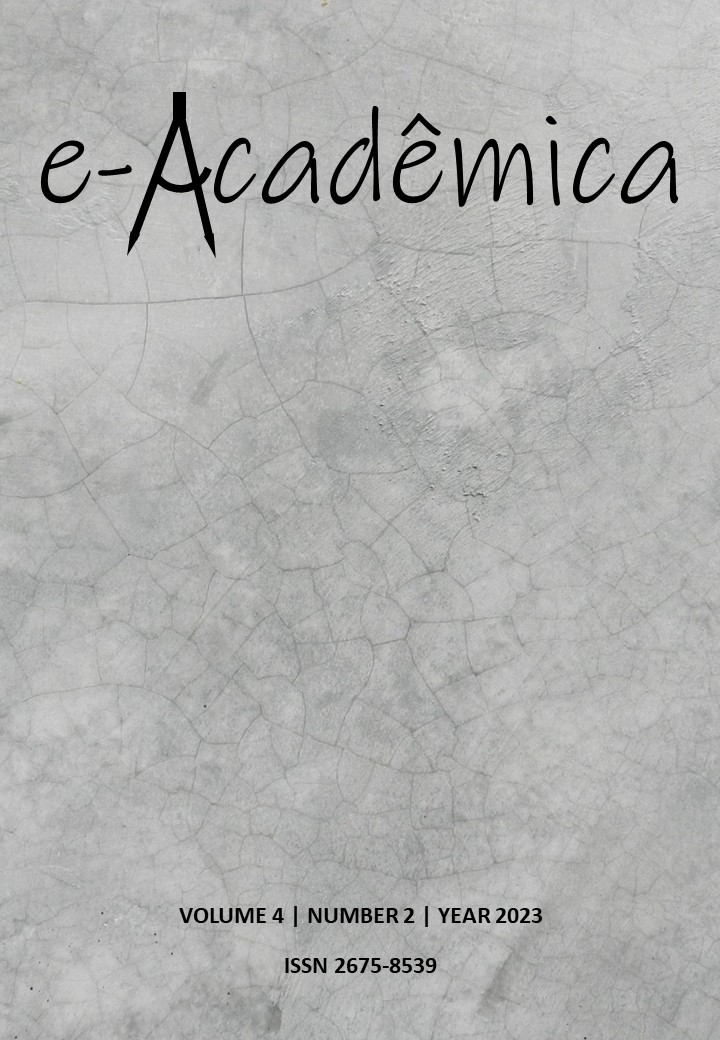Correlation between three-dimensional anorrectal ultrasonography and videolaparoscopy in women with suspected deep endometriosis
DOI:
https://doi.org/10.52076/eacad-v4i2.446Keywords:
Deep endometriosis; Anorectal ultrasound; Videolaparoscopy.Abstract
Endometriosis is characterized by glandular and endometrial tissue outside the uterine cavity. They are most often found in the pelvis, but can also be found in a variety of locations, including the intestine, diaphragm, and pleural cavity. Although not malignant, ectopic endometrial tissue and inflammation can result in clinical manifestations such as constipation, dyspareunia, chronic pain, and infertility. The association of signs and symptoms, with the findings in anorectal ultrasound imaging and the surgical procedure of videolaparoscopy, can presume the presence of endometriotic lesions. The definitive diagnosis of endometriosis is histological after biopsy or surgical resection of the lesion. Therefore, a retrospective and observational study will be developed, with a sample of women with endometriosis, submitted to imaging tests and presence of lesions.
References
Ballard K.; Lowton K. & Wright J. (2006). What’s the delay? A qualitative study of women’s experiences of reaching a diagnosis of endometriosis. Fertil Steril; 86:1296–1301.
Cameron I. C., Rogers S., Collins M. C. & Reed M. W. R. (1995). Intestinal endometriosis: presentation, investigation, and surgical management. Int J Colorect Dis; 10: 83–86.
Carter J. E. (1994). Combined hysteroscopic and laparoscopic findings in patients with chronic pelvic pain. J Am Assoc Gynecol Laparosc; 2(1):43-7.
Chapron C. & Dubuisson J.B. (1996). Laparoscopic treatment of deep endometriosis located to the uterosacral ligaments. Hum Reprod; 11: 868 –873.
Cornillie F.J., Oosterlynck D., Lauweryns J. M. & Koninckx P.R. (1990). Deeply infiltrating pelvic endometriosis: histology and clinical significance. Fertil Steril; 53(6):978-83.
Coronado C., Bailey H. R., Franklin R. R., et al. (1990). Surgical treatment of symptomatic colorectal endometriosis. Fertil Steril; 53: 411 – 416.
Delpy, R. et al. (2005). Value of endorectal ultrasonography for diagnosing rectovaginal septal endometriosis infiltrating the rectum. Endoscopy; 37(4):357–61.
Doniec J. M., Kahlke V., Peetz F., Schniewind B., Mundhenke C., 250 Lohnert M. S., et al. (2003). Rectal endometriosis: high sensitivity and 251 specificity of endorectal ultrasound with an impact for the 252 operative management. Dis Colon Rectum; 46:1667–73.
Donnez J., Nisolle M., Casanas-Roux F., et al. (1995). Rectovaginal septum, endometriosis or adenomyosis: laparoscopic management in a series of 231 patients. Hum Reprod; 10: 630–635.
Dumontier I., et al. (2000). Comparison of endoscopic ultrasound and magnetic resonance imaging in severe pelvic endometriosis. Gastroenterol Clin Biol; 24(12):1197– 204.
Eskenazi B. & Warner M. L. (1997). Epidemiology of endometriosis. Obstet Gynecol Clin North Am; 24(2):235-58.
Fauconnier A. & Chapron C. (2005). Endometriosis and pelvic pain: epidemiological evidence of the relationship and implications. Hum Reprod Update; 11:595–606.
Fontelles M. J., Simões M. G., Farias S. H. & Fontelles R. G. S. (2009). Metodologia da pesquisa científica: diretrizes para a elaboração de um protocolo de pesquisa. Revista Paraense de Medicina, 23(3).
Gorell H. A., Cyr D. R., Wang K.Y. & Greer B. E. (1989). Rectosigmoid endometriosis: diagnosis using endovaginal sonography. J Ultrasound Med; 8: 459–461.
Keckstein J, et al. (2003). Laparoscopic therapy of intestinal endometriosis and the ranking of drug treatment. Zentralbl Gynakol; 125:259–66.
Koninckx P.R., Lesaffre E., Meuleman C., et al. (1991). Suggestive evidence that pelvic endometriosis is a progressive disease whereas deeply infiltrating endometriosis is associated with pelvic pain. Fertil Steril; 55: 759–765.
Laufer M.R., Goitein L., Bush M., Cramer D.W. & Emans S.J. (1997). Prevalence of endometriosis in adolescent girls with chronic pelvic pain not responding to conventional therapy. J Pediatr Adolesc Gynecol; 10(4):199-202.
Pandini, R.V. et al. (2018). Endometriose de septo retovaginal e ligamento uterossacro. Journal of Coloproctology; 38 (s1):165-191.
Roseau G., Dumontier I., Palazzo L., Chapron C., Dousset B., Chaussade C., et al. (2000). Rectosigmoid endometriosis: endoscopic ultrasound features and clinical implications. Endoscopy; 32:525–30.
Roy C, et al. (2009). Efficiency of MR imaging to orientate surgical treatment of 247 posterior deep pelvic endometriosis. Abdom Imaging. 248(34), 251–9.
Strathy J.H., Molgaard C.A., Coulam C.B. & Melton L.J 3rd. (1982). Endometriosis and infertility: a laparoscopic study of endometriosis among fertile and infertile women. Fertil Steril; 38(6):667-72.
Togashi K., Nishimura K., Kimura I., et al. (1991). Endometrial cysts: diagnosis with MR imaging. Radiology; 180: 73–78.
Tran K. T., Kuijpers H. C., Willemsen W. N. & Bulten H. (1996). Surgical treatment of symptomatic rectosigmoid endometriosis. Eur J Surg; 162: 139–141.
Verkauf B. S. (1987). Incidence, symptoms, and signs of endometriosis in fertile and infertile women. J Fla Med Assoc; 74(9):671-5.
Waller K. G. & Shaw R. W. (1993). Gonadotropin-releasing hormone analogues for the treatment of endometriosis: long-term follow-up. Fertil Steril; 59: 511–515.
Wingfield M. & Healy D. L. (1993). Endometriosis: medical therapy. Baillière’s Clin Obstet Gynaecol; 7: 813–838.
Zwas F. R. & Lyon F. R. (1991). Endometriosis: an important condition in clinical gastroenterology. Dig Dis Sci; 36: 353–364.
Downloads
Published
How to Cite
Issue
Section
License
Copyright (c) 2023 Luisa Rossetto Broch; Doryane Maria dos Reis Lima; Vinicius de Sousa Morais; Thaylise Caroline Yurk; Dânia de Camargo Lealdini Mantovani

This work is licensed under a Creative Commons Attribution 4.0 International License.
Autores que publicam nesta revista concordam com os seguintes termos:
1) Autores mantém os direitos autorais e concedem à revista o direito de primeira publicação, com o trabalho simultaneamente licenciado sob a Licença Creative Commons Attribution que permite o compartilhamento do trabalho com reconhecimento da autoria e publicação inicial nesta revista.
2) Autores têm autorização para assumir contratos adicionais separadamente, para distribuição não-exclusiva da versão do trabalho publicada nesta revista (ex.: publicar em repositório institucional ou como capítulo de livro), com reconhecimento de autoria e publicação inicial nesta revista.
3) Autores têm permissão e são estimulados a publicar e distribuir seu trabalho online (ex.: em repositórios institucionais ou na sua página pessoal) a qualquer ponto antes ou durante o processo editorial, já que isso pode gerar alterações produtivas, bem como aumentar o impacto e a citação do trabalho publicado.










